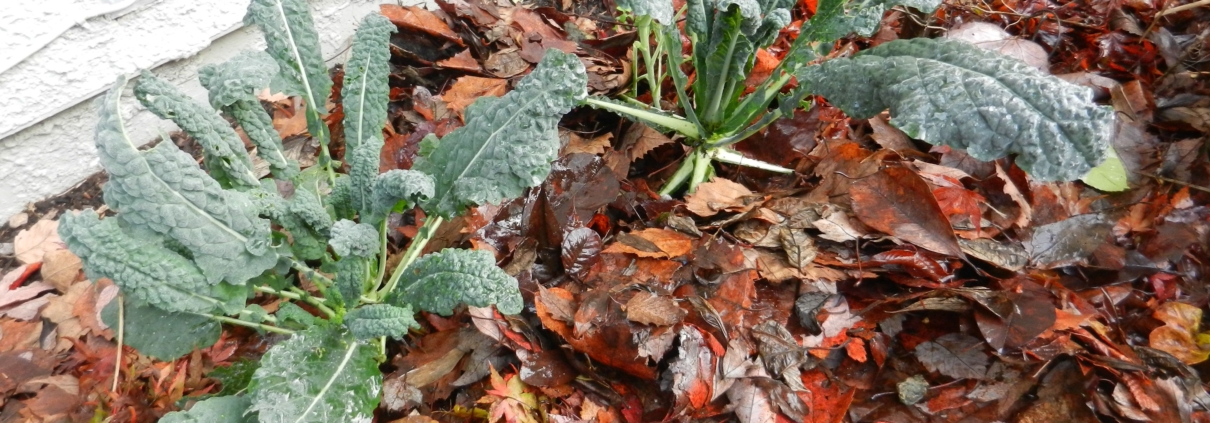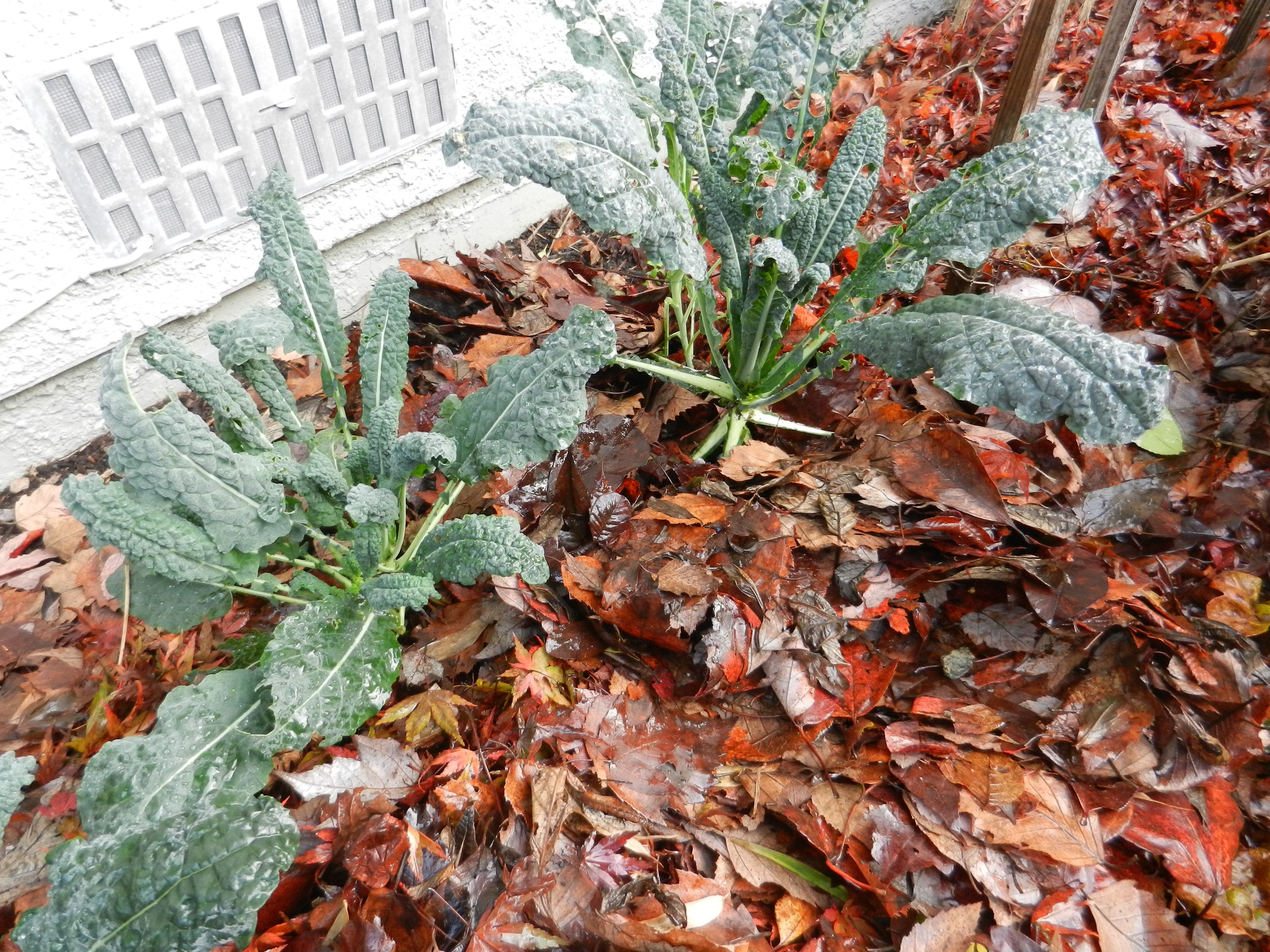Protecting Your Winter Vegetable Garden
Most of the vegetables suitable for the winter garden are perfectly hardy, but minor protective measures will ensure a greater harvest, better quality leaves, and cleaner produce. I’ve grown kale, leeks, chard and purple sprouting broccoli in a raised bed with no protection over the winter other than leaves covering the soil.
The soil needs more protection than the plants, ironically. If we have a mild, wet winter, constant rain will leech nutrients away, compact the soil, and enable weeds to take hold. If we have a cold winter with freezing and thawing, the soil needs an insulating buffer, because if it freezes, water can’t be absorbed by the plants, and the freeze/thaw cycle causes heaving of the soil with subsequent damage to the fine root hairs.
The best soil mulch is a 4-6” layer of autumn leaves, which insulates, protects and feeds the soil as it’s broken down first by worms, and later by microbes. The breaking down process takes place faster if the leaves are chopped up first, but even if left whole, they will work. In really cold weather, a further mulch of fluffy conifer branches or larger leaves may be used to cover the plants entirely. The shoulders of root veggies will benefit from a covering when the temperature plummets.
Covering with a plastic sheet is very effective in cold and rain; it raises the temperature while also protecting from drying winds. A covering such as this needn’t be attached to a frame, it can just be draped over the bed and held down with rocks. Some people make a support with pipe hoops, or a tunnel of wire mesh which keeps the plastic from weighing down the plants if rain or snow accumulates on top. On warmer days, you can leave the plastic sheet on to trap the warmth, or remove it for ventilation.
What about a greenhouse? This of course is the ultimate protection, and crops grown in an unheated greenhouse will have unblemished leaves, no slug damage, and the warmth of sunny days brings on spurts of growth unseen outside. Just remember to water occasionally, and in a very cold snap, a blanket or tarp will keep the plants warmer. On sunny days you may have to open the doors to moderate the wide swings of temperature from day to night, and to provide ventilation.
What about slugs? Slugs don’t go south for winter, but continue to share our harvests, unfortunately. Safers Slug bait is safe for pets and other animals, and is worth using sparingly all season long in a mild winter.
Climbing cutworms can do serious damage in the early spring; their presence looks like slug attacks, but there will be no slime trail. They come out at night to eat, so either go out with a flashlight, or check for the characteristic C-shaped, ugly-looking caterpillar curled up in the leaf litter. Their pupae look like mahogany bullets, something to eliminate whenever you see them.
So enjoy your winter garden, and with these few precautions your harvest will be bountiful and rich.
At the risk of sounding like a broken record, I will remind you all of Linda Gilkeson’s fine book Year Round Harvest: Winter Gardening on the Coast, available via her website.



